If you’re lucky enough to find yourself at the Virginia Coast Reserve in the springtime, you might witness hundreds or even thousands of chunky red knots foraging for mussels and clams as they chirp and whistle along the shore. For this flock of migratory shorebirds, it may be their last meal before they fly north to Arctic breeding grounds for the summer.
And their journey didn’t start here.
Red knots migrate over 9,000 miles from the southern hemisphere to the north in the spring and repeat the journey in reverse in autumn. Sub-species of red knot fly different routes – from Australia through Asia, or, like the variety that stops in Virginia, from the southern tip of South America to the top of the Arctic.
The red knots are just one of Earth’s many species that rely on healthy coastal ecosystems. Humans are another. And while these colorful shorebirds soar above the world’s vast stretches of coastline on their epic bi-annual journey, there’s another phenomenon — less visually striking, yet just as remarkable—happening in the air around them.
You may already know of “blue carbon”, or the carbon dioxide that is drawn down from the atmosphere and stored in coastal wetlands like mangrove forests, seagrass meadows and saltmarshes. Blue carbon is one of a suite of natural climate solutions that together, along with a steep reduction in emissions, can meaningfully contribute to stopping the worst effects of the climate crisis. This means that protecting, managing, and restoring red knot habitat is not only good for the birds — it’s good for people and the planet as well.
So, what does blue carbon protection and restoration look like on the ground? Here we highlight six projects around the world that are contributing to research into this promising natural climate solution. Together, they form part of a global network measuring how coastal protection and restoration can contribute to mitigating the climate crisis while providing numerous other benefits—from support for biodiversity and local livelihoods to improved coastal resilience.
Top 10 List
-
Seagrass Restoration in Virginia, United States
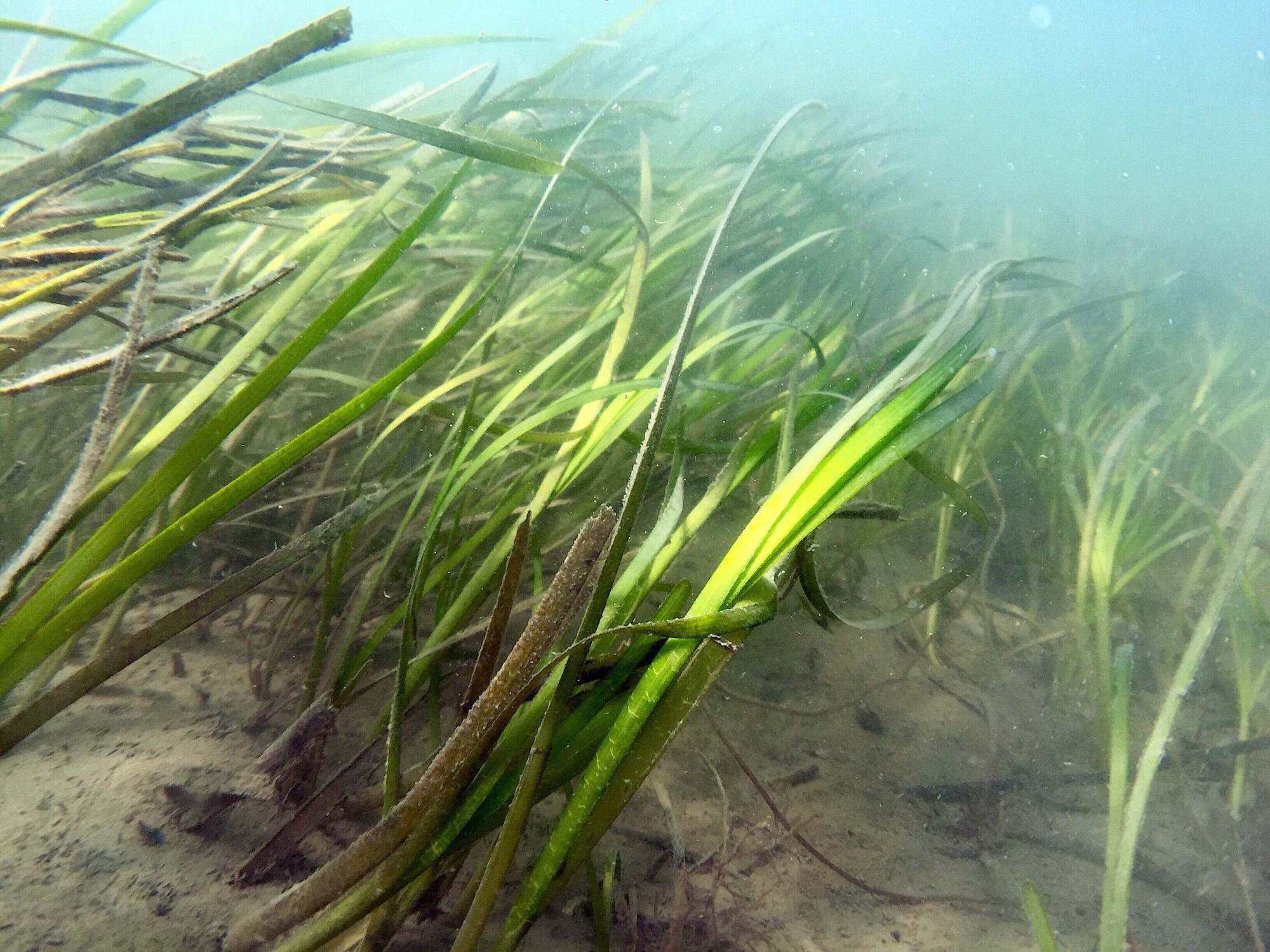
Underwater view of eelgrass shoots © Alex Novak / TNC Aside from being a small but important red knot fuel stop, Virginia’s barrier islands also happen to be the site of the world’s largest seagrass restoration project.
While the state’s seagrass meadows were decimated by noxious slime mold and a powerful hurricane in the 1930s, in 1999 a patch of seagrass was discovered in a bay off Virginia’s Eastern Shore. Since then, the Virginia Institute of Marine Science (VIMS) and The Nature Conservancy (TNC) Virginia have planted 250 hectares of eelgrass (Zostera marina), which have naturally grown to an incredible 3,600 hectares of restored seagrass meadows.
The eelgrass provides many benefits to people and nature, including carbon storage, habitat and food sources for species above and below the water’s surface, erosion control, and support for local fisheries.
This project is now demonstrating how the climate benefit of seagrass restoration can be quantified. Lessons from the project are intended to inform and inspire other seagrass projects around the globe, as well as provide valuable funding for the long-term conservation of this unique coastal habitat.
-
Women-Led Mangrove Conservation in Papua New Guinea
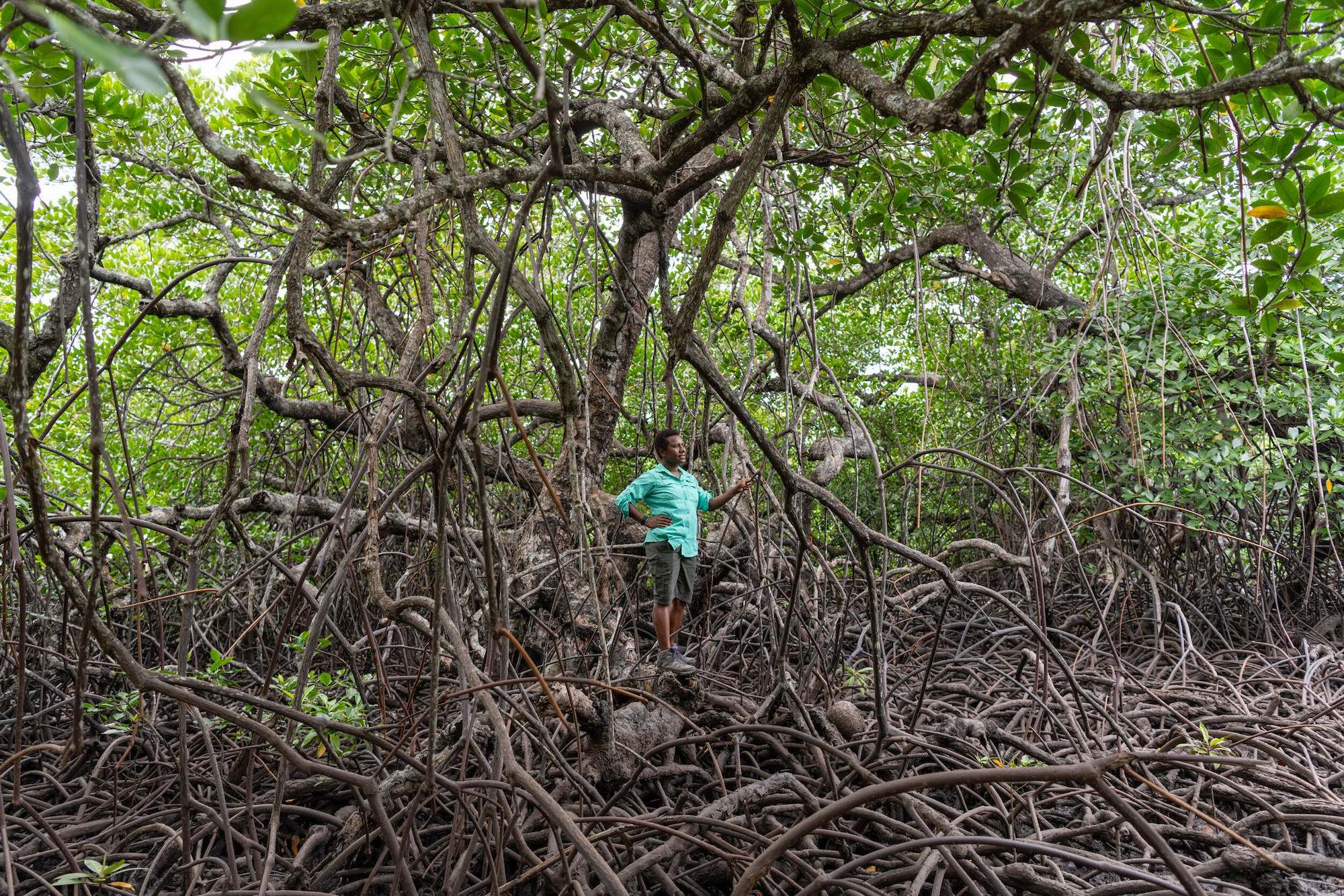
Mazzella Maniwavie, the program manager for Mangoro Market Meri, stands within a mature mangrove forest at Bautama near Port Moresby, Papua New Guinea © Annette Ruzicka Perhaps the most well-known of blue carbon habitats are mangroves – trees that live in salt water whose tangled roots provide habitat for crabs and fish. Not only are they havens for biodiversity, these rich ecosystems store carbon, improve livelihoods, and protect communities from storms and erosion.
Papua New Guinea (PNG) is home to 75% of the mangrove coverage in the Pacific region and is second only to Indonesia in mangrove diversity with a total of 43 mangrove species. It’s also home to the Mangoro Market Meri (Mangroves, Markets, and Women) initiative – a ground-breaking program that supports local mangrove conservation efforts by empowering women to access the numerous benefits of these ecosystems.
In support of this program, TNC and partners are filling research gaps and documenting the insights of local women have a deep knowledge of the mangrove forests. The project is also piloting a blue carbon market initiative that will enable communities to financially benefit from mangrove conservation and restoration.
Project activities range from building markets for sustainably harvested mangrove products, such as shellfish and mud crabs, to launching an education and resource center and providing training in leadership, financial literacy, and business and conservation management.
-
Community Socioeconomic Resilience in the Gulf of California

Marismas Nacionales Biosphere Reserve © Anuar Martínez Another important stopover for some red knot populations, Mexico has two blue carbon project sites along the Gulf of California.
The first is in the Marismas Nacionales Nayarit Biosphere Reserve – a large network of brackish coastal lagoons, mangrove forests, swamps, deltas, and marshes in the state of Nayarit. The reserve holds 15% of all mangrove ecosystems in Mexico, and is home to sixty species of endangered vertebrates, 36 of which are endemic birds.
This amazing biodiversity is managed by rural communities who depend on fishing, agriculture, and livestock husbandry for their livelihoods. TNC Mexico and partners are working with two ejidos (agricultural areas of communal ownership and management for collective use) to identify both the factors driving the loss and degradation of mangroves and the conservation and restoration activities that are feasible and sustainable for these communities. The project also aims to identify subjective well-being indicators for that would lead to improved social outcomes of the work.
Further north in Sonora, a second project team is working at Cienega de Santa Clara (CSC), a 5,600-hectare wetland and one of the last remaining marshes in the Colorado River Delta. Its main water source is agricultural run-off in Arizona, which is conveyed across the U.S.-Mexico border and discharged into the wetlands.
Drought and other factors mean both countries are evaluating opportunities to redirect this water for desalination – jeopardizing the water flow to the CSC and thus its unique environmental services. TNC and partners of the “Raise the River” initiative have been working on restoring and securing these water resources to ensure continued water flow through the Colorado River Basin to feed these iconic wetlands.
-
Sustainable Shrimp Farming & Mangrove Conservation in Indonesia
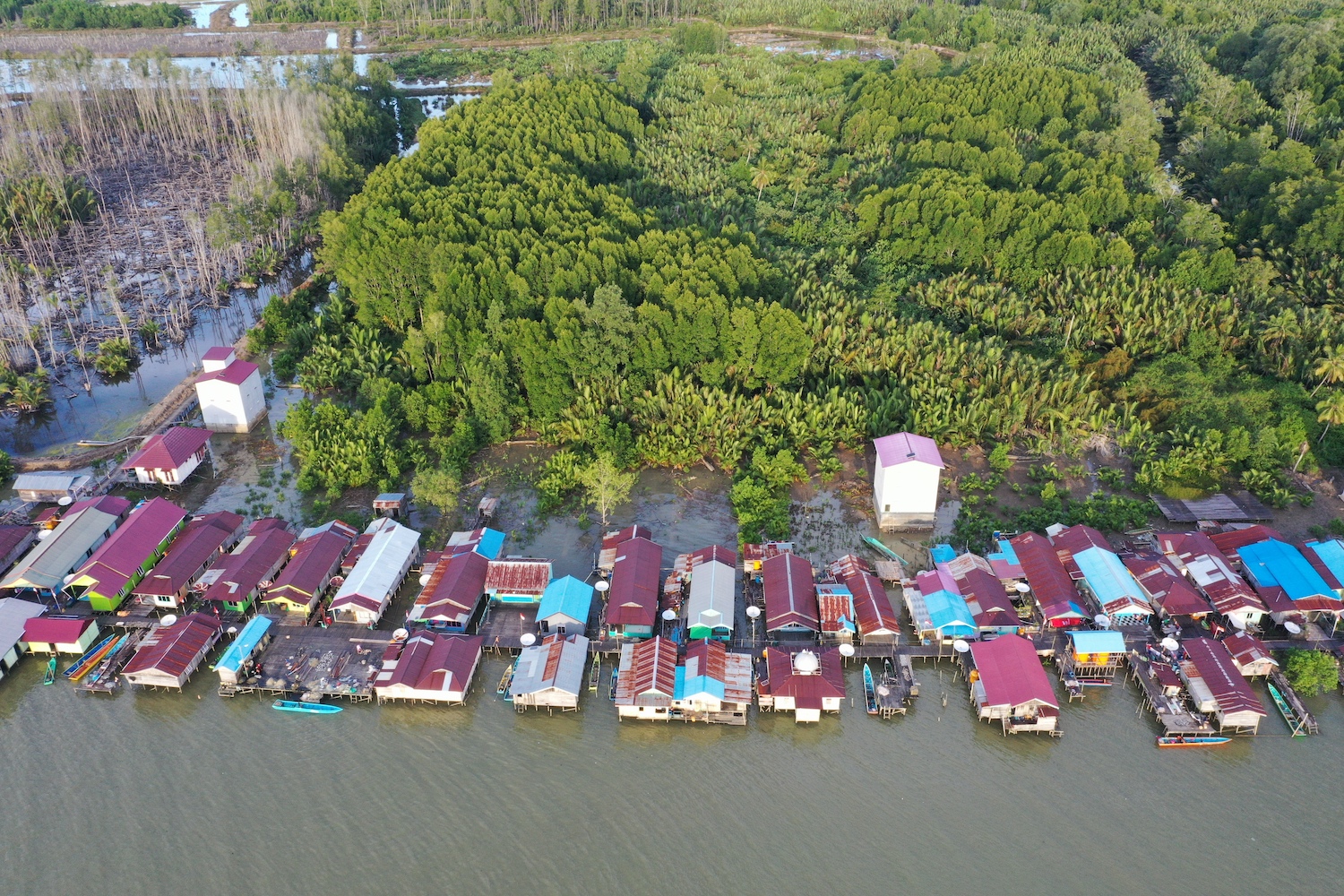
A shrimp farming community in Kalimantan © YKAN Indonesia’s vast mangrove ecosystems are subject to increasing conversion pressure due to the expansion of ponds for shrimp farming – as of 2019, 13% of the country’s mangroves had been deforested for shrimp ponds. As the global demand for shrimp increases and shrimp farming continues to expand, the loss of mangrove habitat will harm biodiversity and local communities.
TNC, Yayasan Konservasi Alam Nusantara (YKAN), and partners are implementing a Shrimp-Carbon Aquaculture approach (known as SECURE) that aims to restore mangroves, improve biodiversity and carbon storage, and improve shrimp farmer livelihoods. This approach splits an active shrimp pond into two or more ponds, with a majority of the original pond allocated to mangrove restoration and the remainder maintained for shrimp production using improved aquaculture methods. The restored mangrove forests not only help sequester carbon – they have been shown to increase shrimp yields, provide environmental services such as clean water, and support other important co-benefits such as increased biodiversity and coastal resilience. Improving yields and income from these existing ponds also helps reduce the need to convert existing mangrove areas to new shrimp ponds.
-
Strengthening Mangrove Management in Kenya

Mangrove Restoration on Pate Island, Kenya. © Roshni Lodhia Over in the western Indian Ocean, mangroves face their own unique set of threats as coastal development, pollution, and climate change all contribute to the degradation of these vital ecosystems.
Local community groups such as the Pate Marine Community Conservancy as well as community forest associations are already playing a pivotal role in the conservation and management of these natural resources. TNC, in collaboration with local universities and research institutions, is conducting scientific research to better understand the ecology, climate benefits, and threats to mangrove ecosystems in the Lamu-Tana River seascape. The project team will use this knowledge to inform effective conservation strategies and enhance technical capacity in community conservation groups for the continued protection and restoration of the region’s mangroves.
Ultimately, the project team aims to develop a blue carbon project for the Lamu-Tana River seascape that will generate sustainable conservation finance, protect the biodiversity and ecosystem function, and create additional incentives for communities to maintain these critical mangrove systems.
-
Coastal Restoration and Sustainable Financing in Australia
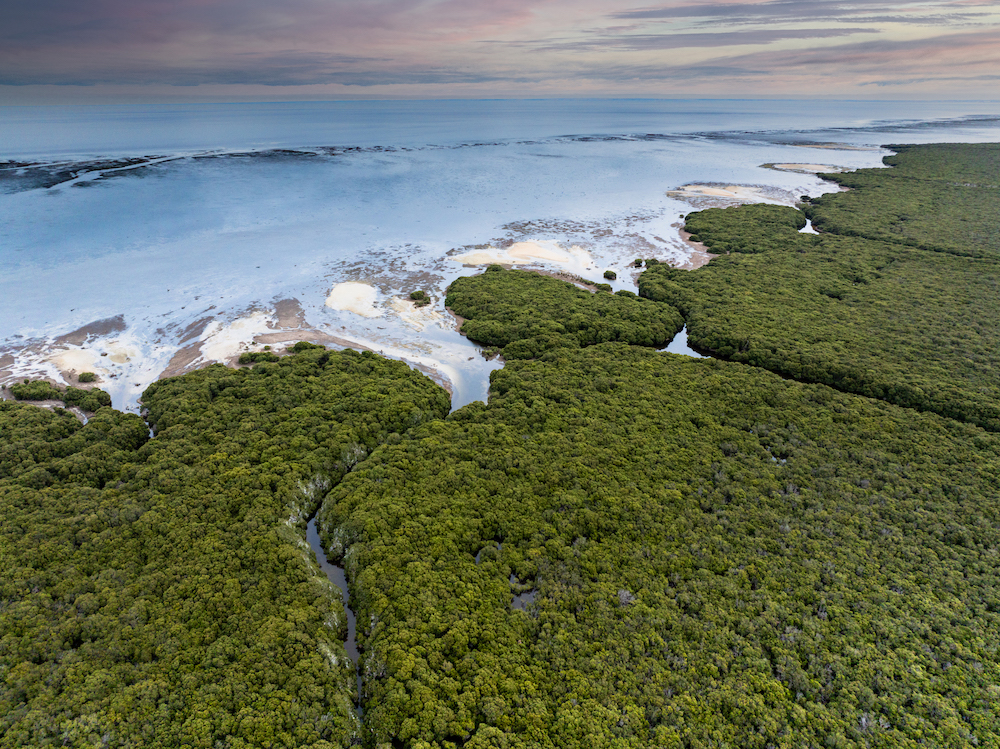
Aerial shot of mangrove in South Australia. © Streamline Media / TNC Australia In the last 100 years, many of Australia’s coastal wetlands have been drained and converted for agriculture, livestock grazing, and development. With sea levels in parts of the country expected to rise by as much as 1 meter in the coming decades, the need to transition to blue carbon-based economies and to increase coastal community resilience against the effects of climate change is clear.
In 2022, the Australian Government approved the use of a new method under their emissions reduction fund that will enable carbon credits to be generated from the restoration of blue carbon ecosystems. This has unlocked financial opportunities for large-scale restoration of tidal wetland ecosystems.
TNC Australia and partners are now piloting mangrove and saltmarsh restoration projects in South Australia and Queensland to help mitigate the impacts of climate change and test blue carbon as a viable natural climate solution.
Importantly, these projects would increase coastal biodiversity and habitat for fish and migratory birds like red knots, who after a long flight south, finally touch down on Australia’s shores. Australia is one of the places where flocks of red knots settle in to escape the winter of the northern hemisphere.
As climate change intensifies the degradation of coasts around the world, we need to rapidly scale up mangrove, seagrass, and saltmarsh restoration and protection efforts to protect these critical ecosystems and the communities that depend on them.
Without this, the near-threatened red knots – and countless other species – will continue to lose their habitat. Thankfully, there’s hope in blue carbon.
If you’re interested the work that blue carbon project teams involved in TNC’s Natural Climate Solutions Prototyping Network are doing around the world, you can learn more here.
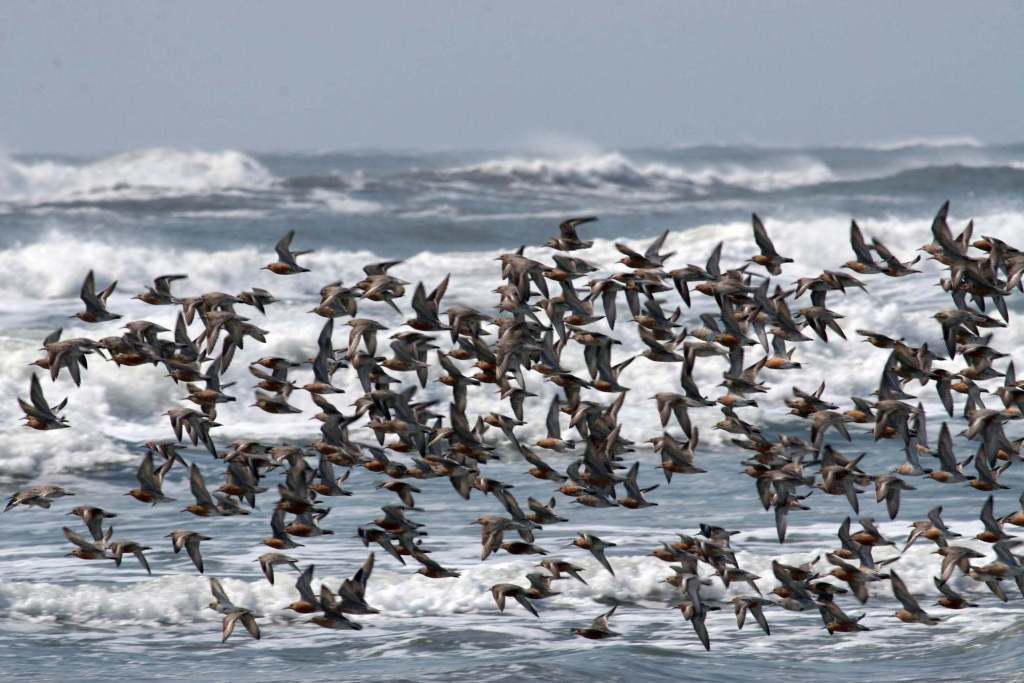



Join the Discussion